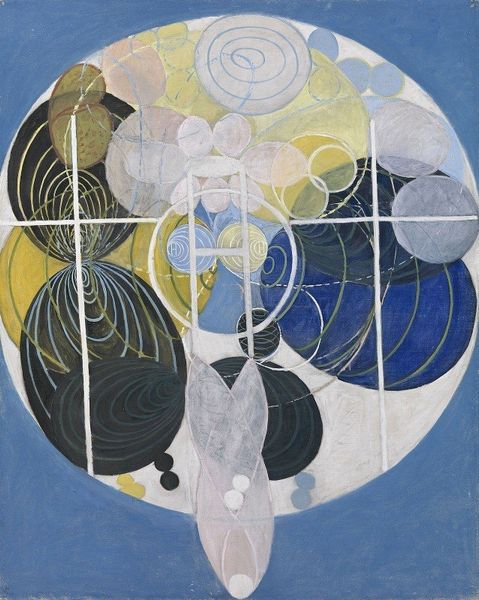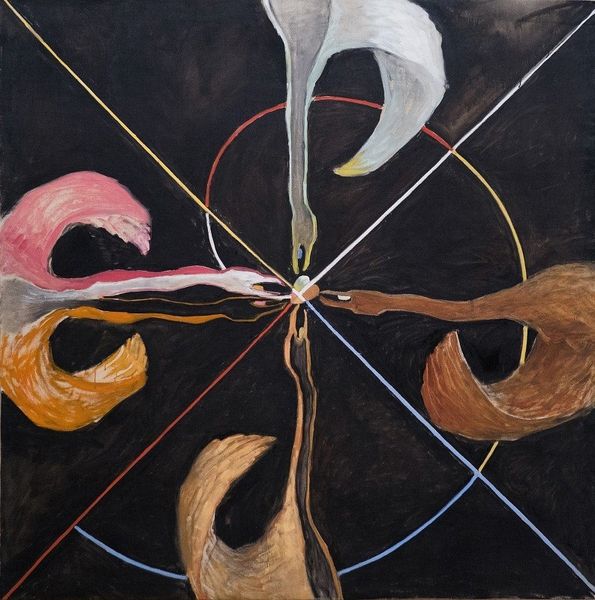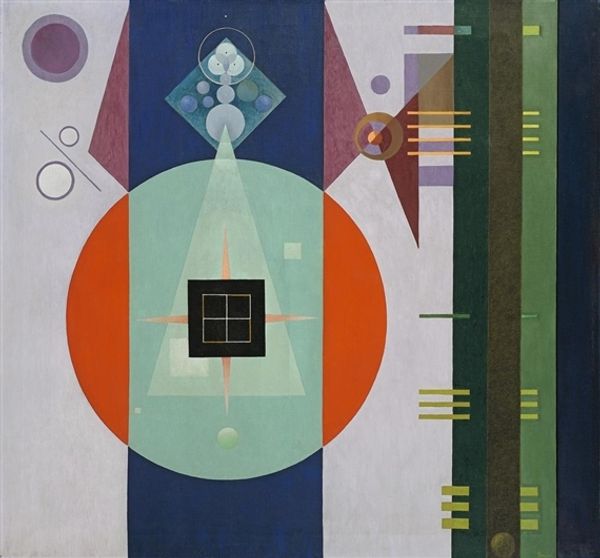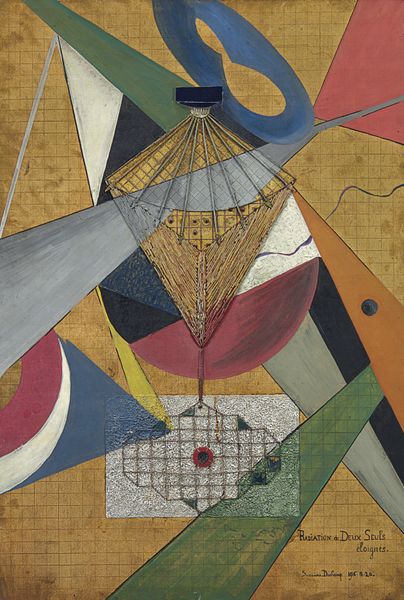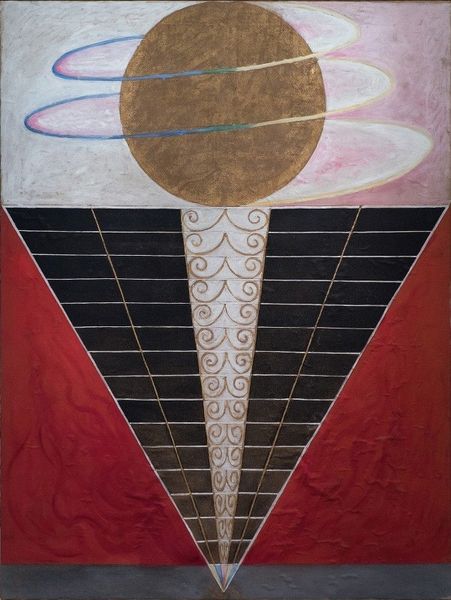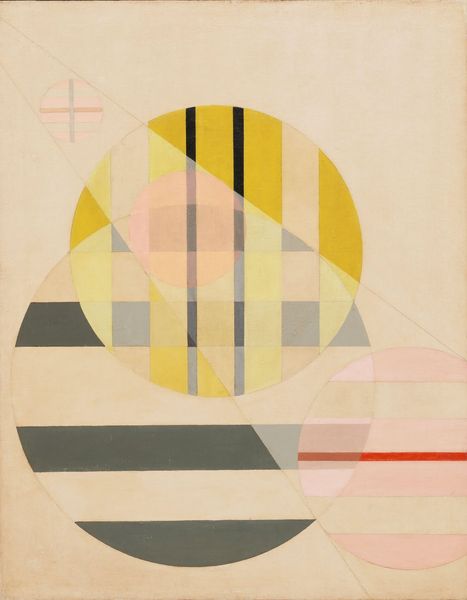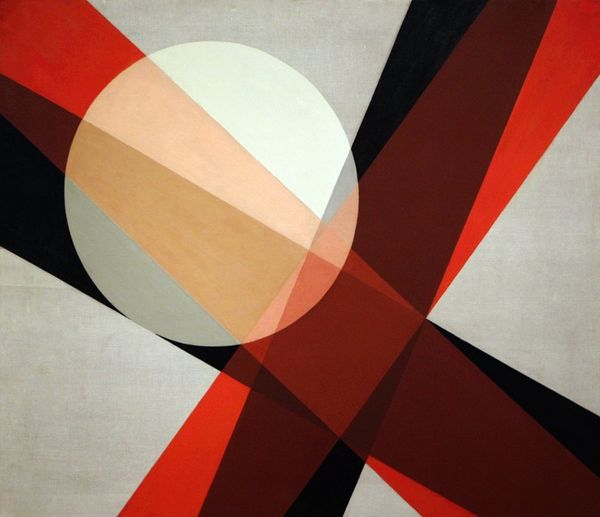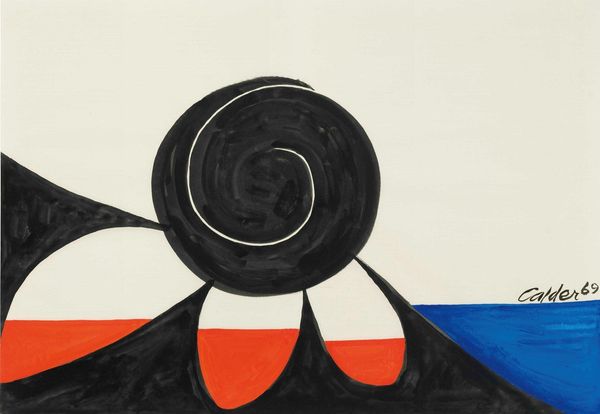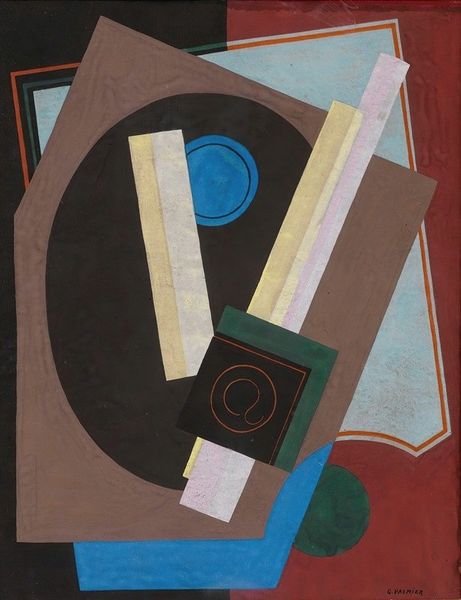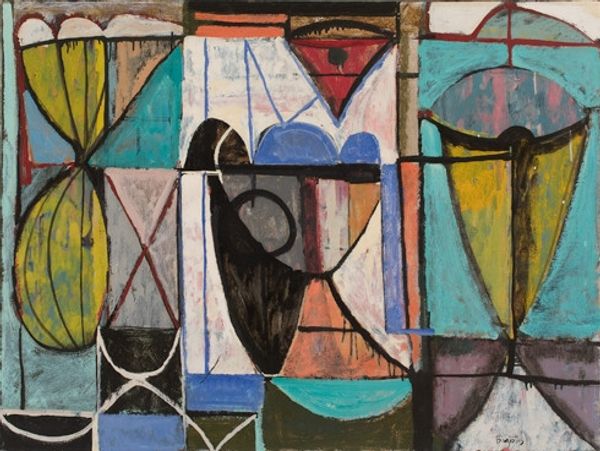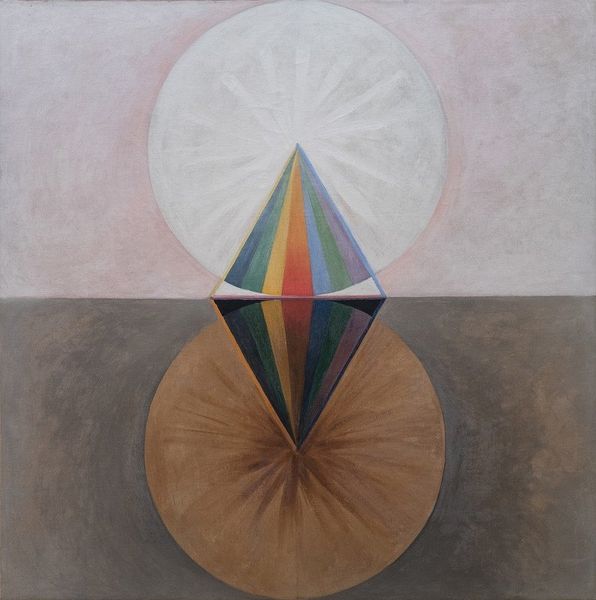
Copyright: Public Domain: Artvee
Hilma af Klint painted "Evolution, No. 13, Group VI," employing oil and tempera. The most striking image is the serpent encircling a radiant, floral form, immediately evoking the Ouroboros, an ancient symbol of cyclicality. The serpent, eternally consuming its own tail, appears across cultures, from ancient Egypt to Gnostic traditions, representing the unending cycle of birth, death, and rebirth. Note how Klint sets this ancient symbol within her unique, abstract composition. A recumbent nude on the painting's left and the serpent in the circle suggest the dualities of human existence. Consider the symbolism in relation to the serpent's depiction in the Garden of Eden, where it represents knowledge and awakening. In this artwork, it challenges us to consider the subconscious undercurrents influencing our perceptions, compelling us to explore the perpetual dance of creation and destruction. This visual motif is not merely a representation, but a gateway to understanding the profound rhythms of existence.
Comments
No comments
Be the first to comment and join the conversation on the ultimate creative platform.
